
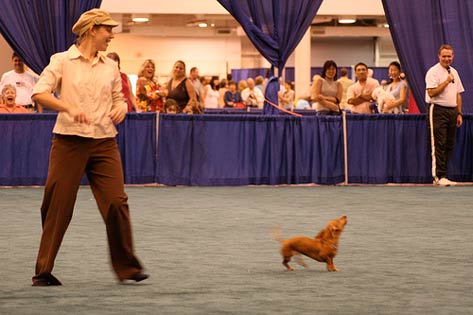
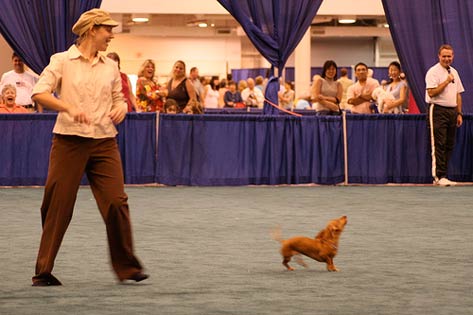
Maybe you have a dog that loves to move around the room with you when you dance to your favorite song, or even gets up on her hind legs to try to join you in the dance. If you love to dance and you feel like you and your dog have the dexterity to choreograph your moves, you might have just found the perfect activity. You can take dancing with your dog to a whole other level, including competitions, exhibitions, and entertainment events. Who knows, you and your dog might just be the inspiration for a new television show called So You Think Your Dog Can Dance?
Heelwork to music, canine musical freestyle, canine freestyle, freestyle dance; these are some of the categories of dog dance that participants take part in. Some do it strictly as a hobby, some for the thrill of competition, but always for fun. And freestyle dancing as a competitive sport is catching on worldwide.
Heelwork to music may be one of the most obedience intensive categories in canine dance. The dog must be able to heel on both sides of the trainer’s body, not just on one side, as is typical for obedience heeling. In heeling dance routines, the dog must stay in step with her owner at all times, as though on an invisible tether. Although it is also called freestyle heeling, this category does not allow for much canine freedom. Moving away from the human partner, passing through the partner’s legs or jumping are not allowable moves for this category.
That is not to say that there is not room for complicated footwork. With heelwork to music, the human trainer and dog partner show that they are perfectly coordinated, with steps that include stepping backwards and forwards, pivoting, circles and spirals.
Freestyle dance allows for a lot more freedom of movement on the dog’s part, and at the same time, allows your dog to demonstrate her ability to stay coordinated and to show off any special talents. This level, which is a step up from heeling, allows for more creativity. Here, you can demonstrate original routines and complicated routines, with jumping, leaping, spinning, backing through the legs and doing jumps over each other. This is the team’s chance to showcase their ability to work together in a choreographed way, incorporating complicated moves into the basic framework of the heeling routines.
You may choose to wear a costume for your routine; many people do, especially when they want to use a “theme” song -- think Cowboy hat and boots for a country song, or a Poodle skirt and saddle shoes for a ’50s swing song. The possibilities are endless.
During the routines, the handler can give only verbal cues and hand signals to the dog; treats and training aids are not allowed during competition. In early beginners’ competitions, you can keep your dog on-leash while she gets a feel for performing in front of people and learns not to get distracted and stay focused on you and the routine. As her skills and focus improve and she perfects her ability to follow your lead, you can progress to off-leash “dancing.”
You don’t have to be a professional dancer, and your dog doesn’t need to be an obedience champion, but your dog will need to have passed basic obedience. She will need to be able to heel on command, sit and lie down, and so on. These commands are the basis for the basic steps of a dance routine, and your dog should know them well before attempting to coordinate them to music. In addition, it is important to note that your dog must be able to perform these tasks without the added incentive of a treat, since treats are not allowed in the competition ring.
And while it may not be written in the rule books, a love of music is an absolute must if you want to be a successful dance team. Experiment with different genres and rhythms until you find the songs your dog responds to best. Look for that special wag and hop and gleam in the eye and you’ll know you have found the right songs.
In a competitive freestyle competition, points are based on difficulty, precision, and ability to stay in rhythm with the music. Judges may also take costumes into consideration, along with your interpretation of the music, as well as your dog’s attitude and enthusiasm for the routine.
With canine freestyle clubs and competitions around the world, rules will vary from club to club, so if you have hopes for global freestyle domination, you will need to learn the different rules and teach them to your dog. If you plan on staying local or national, you need only learn the rules of your club.
In most competitions, teams are made up of two: the owner/handler and the dog. However, there are also team competitions, from pairs of dogs dancing together to up to several dogs on a team dancing together.
A simple online search for canine freestyle will take you to some very enthusiastic participant pages, where you can learn a little through their experiences. The best way to learn more about canine freestyle as a sport is to visit the association pages, some of which are listed below in "Resources." Many websites also include videos of training and of actual competitions and shows.
If there is a club in your area, even better, since the best way to learn is to immerse yourself in the culture of canine dancing and competition. But first, go to see a demonstration, talk to members of the group and start dancing around the house with your dog to see if she has an enthusiasm for it.
Besides the fun and competition of canine freestyle dance, you can also take the joy of dance to your community by entertaining children and seniors. And who know, if you get really good, you may even be invited to perform on TV.
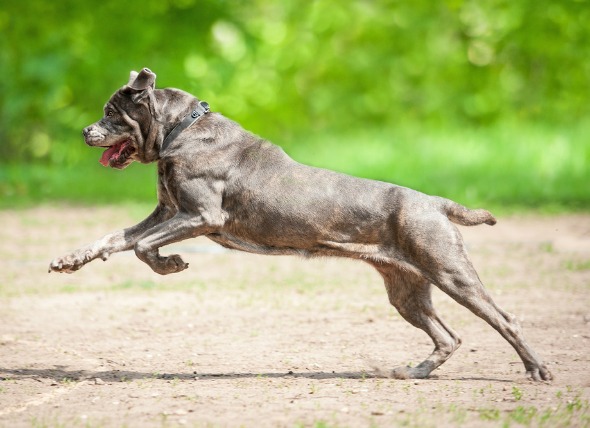 Remedies for Arthritis in Dogs: Glucosamine, Chondroitin Sulfate, Steroids, and NSAIDs
By T.J. Dunn, Jr., DVM
Glucosamine and Chon
Remedies for Arthritis in Dogs: Glucosamine, Chondroitin Sulfate, Steroids, and NSAIDs
By T.J. Dunn, Jr., DVM
Glucosamine and Chon
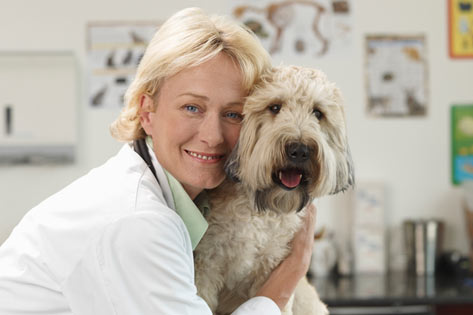 The Healthy Ways Vets Take Care of Their Pets
By Jessica Remitz
Just like every other pet owner
The Healthy Ways Vets Take Care of Their Pets
By Jessica Remitz
Just like every other pet owner
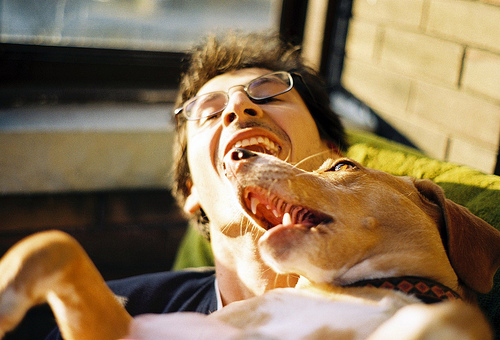 Oral Hygiene and Your Dog's Health
By T. J. Dunn, Jr., DVM
It’s
Oral Hygiene and Your Dog's Health
By T. J. Dunn, Jr., DVM
It’s
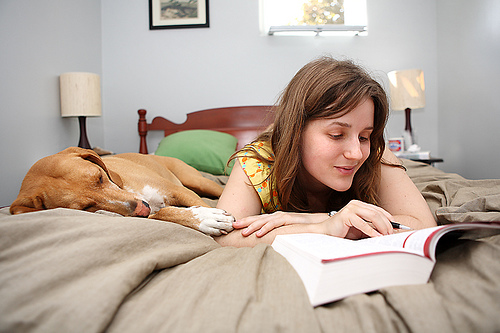 Thank You, Annie ... A Letter from an Old Furry Friend
By T. J. Dunn, Jr., DVM
Many people who ha
Thank You, Annie ... A Letter from an Old Furry Friend
By T. J. Dunn, Jr., DVM
Many people who ha
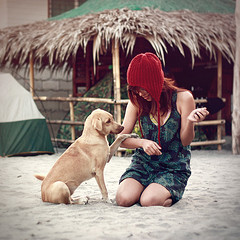 10 Things You Should Know Before Getting a Dog
Have you been dreaming of getting a dog ever since
10 Things You Should Know Before Getting a Dog
Have you been dreaming of getting a dog ever since
Copyright © 2005-2016 Pet Information All Rights Reserved
Contact us: www162date@outlook.com